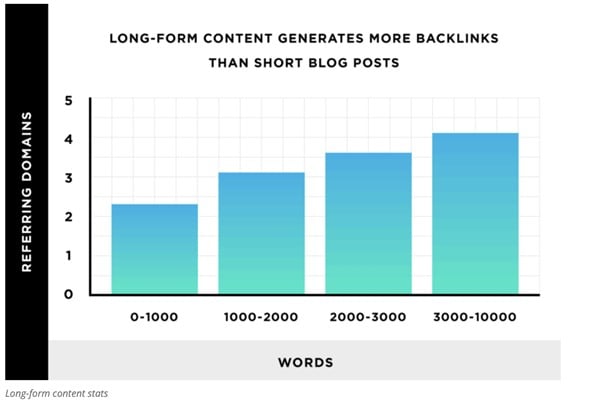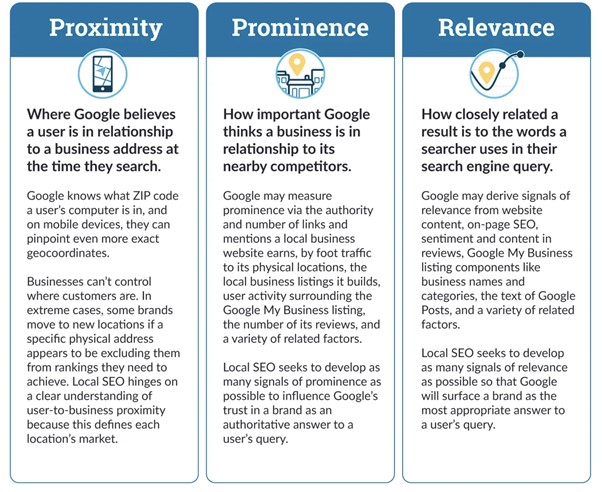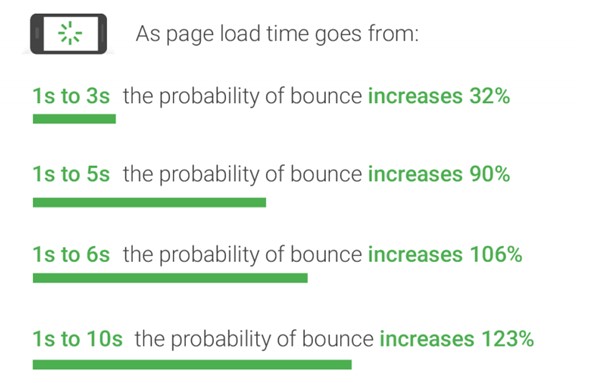SEO Trends for 2022 That You Need To Know
(Ad) 2022 has been a watershed year. The world has begun to open up after the Covid pandemic (out of an abundance of caution), and business engines have started running again. And in the same way, SEO trends have been changing as well.

Source: Statista
SEO survived and thrived despite budget cuts, pandemic-related issues, strategy pivots, and scaling problems.
SEO in 2022 needs a holistic approach rather than tackling specific technical issues, making short-term SEO sprints to get links and build awareness.
In this blog, we’ll discuss what you should be focusing on for your SEO strategy in 2022, keeping in mind all that’s changing around us. The trends that will secure you from future shocks will propel your business to its next level of growth.
Let’s take a look at some of the top trends in Search Engine Optimization for 2022.
Trend #1: Content is King, and Long-Form Content even more so
There are many benefits to creating long-form content. While it gives you the advantage of talking about your product in detail, it also adds much-needed context, clarity, and storytelling. Most importantly, it also does a great job for your SEO.
As much as you would like to think that we now have the attention spans of goldfishes, there is an appetite for well-written and thought-out long-form content.
Long-form content captivates and engages readers, and it gets you more traffic. Long-form content also usually falls in the 3,000 words or more category.
But it isn’t as simple as writing a 3,000-word essay if you want to build traction for your website. Your content also needs to be structured well. Break up your content using subsections and headers like H1, H2, etc. Using header tags will help your content become more scannable and easily digestible.
Applying header tags is especially useful to keep in mind when you’re creating long-form content that will be read using a mobile device. The small screen size needs a well-structured piece of content, anything too long might even become intimidating, and your reader will lose interest rather quickly.
Long-form content also targets more search terms and helps you get more backlinks.

Source: PointVisible
Here are some long-form pieces of content that you can create:
- Term glossaries, frequently asked questions (FAQs), and common glossaries
- Blog posts
- Guidebooks or posts, how-to content, and educational resources
- Whitepapers
- Case studies
- E-books
- Long-form reviews
Trend #2: Localization of Search Engine Results
Seeing the same results pop up multiple times during a search reinforces a particular belief. Google is very mindful of this and now prioritizes fact checks and truth to build trust.
In 2022, local area-specific content likely outranks national and global content as people increasingly rely more on local information. If you’re a website targeting a particular state, you will need to create content specific to that state. Gone are the days of plastering content onto other regions in the world.
Organic SEO plays a vital role in local SEO campaigns. Localization creates more relevant content and offers personalization at a location-based level.

Source: Moz
So, start optimizing your website for localized content. Localization does not only mean translating your website. Localization also means researching relevant keywords, adding your local phone number and contact address, and saving your business on Google Maps. Other ways include optimizing your Google Business Profile (formerly Google My Business) and even localizing your URLs and meta descriptions for particular localities.
Trend #3: Improve your website performance, aka page speed
In an age of new smartphones launching every year, with better capabilities and processors, your website needs to be ready and be snappy enough to create stellar performance on these devices.

Source: Pantheon
As you can see from the above image, for anything that takes longer than 5 seconds, please expect a bounce rate of 90%.
Furthermore, page speed is a significant factor for Google regarding rankings. Investing in improving your page speed helps improve the user experience and is a book for SEO.
Page speed is subjective, and every user has a different take on how long they are willing to wait to consume your content. But as a general rule of thumb – the faster, the better.
There are many ways to optimize your page speed. Here are four of them:
1. Use a reputable host
Website hosts store your website contents and provide the connection between the website and the internet. Get one that has maximum uptime and is reliable.
2. Compress images and scripts, and use CSS sprites
Compressing images gives a big boost to your page load times. Additionally, you can use CSS sprites to decrease the number of HTTP requests. You can do this by combining all the images into one image. Improve your general CSS structure as well.
3. Use HTML5 to deliver more engaging experiences
4. Use a CDN
CDN or content delivery networks are large distributed servers that deliver your content to your users in the shortest time possible. They take away the headache of geo-locating the servers and optimize for speed. Using a CDN also improves your platform security.
Diagnose your page speed and scan for potential areas that you can improve.
You need to aim for that 90/100 green score on the Google Page Speed site. It is completely possible, and if you take note of the above points, it is very achievable as well.
Trend #4: Optimize for Google Discover
Google Discover is Google’s content consumption page that resides on almost all modern Android smartphones. You can access it on iOS as well. It forms prime real estate when it comes to content because it is so easily accessible.
It is also available on desktops, it is a feed of relevant content curated based on a person’s searches. It gives you the latest stories, news, media, videos, articles, etc.
Google Discover includes an image as part of the search listing, so if you’re optimizing to land your piece of content on this page, make sure that you include an image that correlates with your topic and keyword.
Besides having the highest quality content, keep in mind that you use impactful yet relevant headlines. Posing a question in your headline might pique the reader’s interest and get you that click.
Regularly posting content is also helpful as Discover usually searches for the latest insights to share with users. But do keep in mind that articles selected by Discover tend to have a shorter shelf life as the feed keeps refreshing rather quickly.
Doing this increases your chances of Google including your content on the Discover page, which can bring in a massive amount of organic traffic.
Users can also fine-tune their Google Discover page by fine-tuning their feedback and interests.
Trend #5: First-party Data
Google has been pushing hard to retire third-party cookies over the years. While this is great for the user from a privacy point of view, you as a business need to adapt quickly to this new paradigm shift.
It would help if you started building a first-party data collection plan to counteract this move. Collecting first-party data means attracting users to your website via a web search and creating compelling landing pages to capture their contact information on a first-party basis.
The age of relying on third-party cookies is coming to an end. And you will need to bolster your brand and lead generation mechanism to compel visitors to land on your website and leave their contact info in exchange for a valuable piece of content (e.g., case studies, quotes, whitepapers, etc.)
Collecting first-party data means building your authority and brand and, more importantly, handling the data you receive responsibly. The biggest advantage of first-party data is that the data is captured with the user’s explicit consent. Building your database gives you more detailed segmentation options that can improve your marketing and sales strategies.
Key Takeaways: Paying attention to SEO in 2022
The five trends mentioned above are by no means exhaustive, but they are a good representation of where the industry is heading this year.
Good content will always bring in the right eyeballs, and there is no denying that. However, focusing on the technical aspects of SEO will give you that added boost to get more leads and build brand awareness.
Let’s look at some of the top highlights of where SEO is heading this year:
-
Long-form content that is well structured and thoughtfully put together will get you the right leads and visitors to your website. Invest in your content production team and embed the content you create with the right keywords.
-
Localize where possible. The future is high trust content that is relevant and prominent.
-
Google Discover is a great place to reach a broad audience quickly. But be mindful of its ephemeral nature.
-
Page speed is critical. Optimize for different devices and optimize for speed. Quicker loading content means more visitors.
If you need help with SEO or other digital marketing services, contact Hearst Bay Area to get started.

